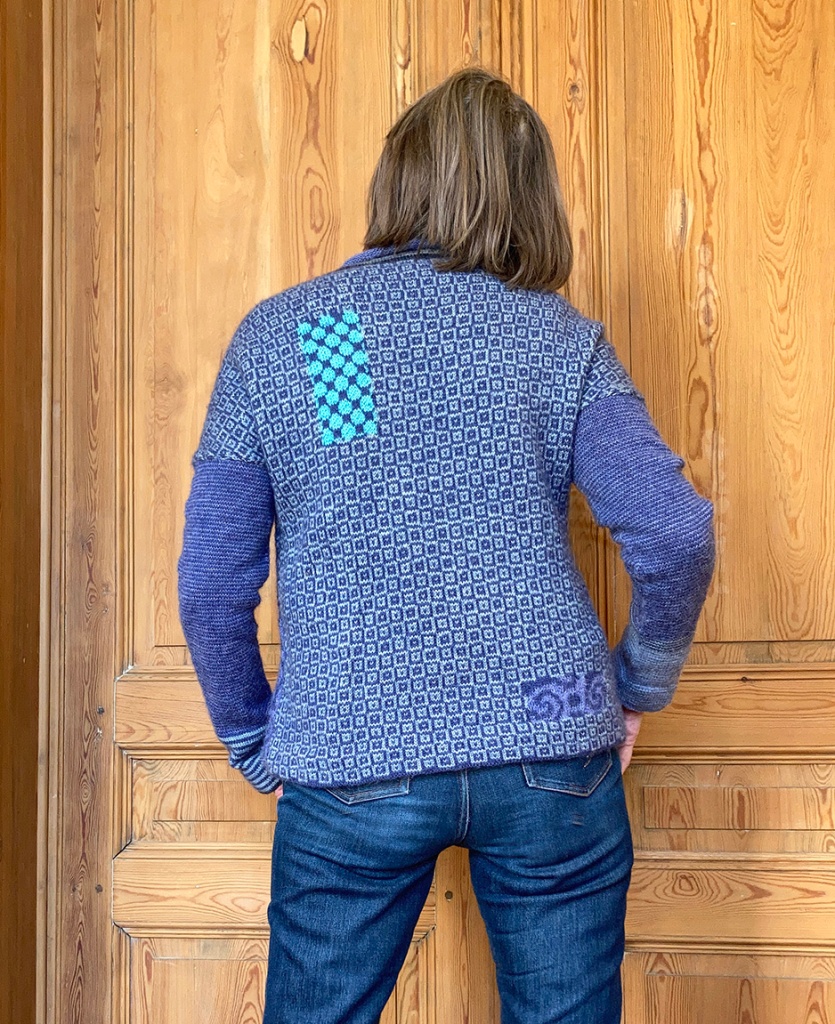
I started a new project some time ago. I have lots of fingering weight skeins in tints of blues; a few full skeins but also a lot of half skeins and small leftovers…
And I liked the spiraling colorwork of the festive mitts I just made.
Plus, I have a pattern that is just perfect to play with colors and charts: my FF backward

I wanted it a little bit less wide so I followed the numbers for S (I usually take M). I started the front with a provisional cast on (167 sts) because I was not sure yet how to do the hem. After 5 repeats + 1 row (= 116 rows) the armhole shaping starts which takes another 72 rows.
My gauge = 29 sts and 33.5 rows. That looks OK.
Front and back are knitted separately back and forth, then sewn together at the sides and the top. I am quickly bored so the back will have another chart, a little more squared, not round or spiralled. Worked it the same way as the front to the armhole (provisional cast on, 116 rows, …) with a difference: some intarsia labels in other blues to create some variety.

Intarsia is so much easier worked back and forth instead of in the round.

The front is ready and the back is finished with a striped band in very dark blue and white. They are ready to be assembled… The sides and top are sewn. Then I wanted a simple hem, no ribbing or anything fancy. I unraveled the provisional cast on’s and knitted a 3 cm folded hem with 2.5 mm needles an sewed the live stitches to the wrong side of the body.


For the neckband I picked up & knit sts with a 2.5 mm circular needle: 82 sts at the front and 52 sts at the back. I worked it inside out because I knit faster than I purl. Knitted 7 rounds and bound off very loosely for some curl.

Then the sleeves: I picked up & knit 100 sts with needle 2.5 mm.
Knitted 50 rounds straight alternating 2 blues every round. Then I started decreasing every 10 rounds.

I wanted long sleeves and I was not sure I would have enough of the darker blue to knit both sleeves the same … so I changed colors at the end of the first sleeve.
Finally I knitted 200 rounds per sleeve and I will add a folded cuff as the body.
Well, in the end I hàd enough of the darker blue for the second sleeve, and as I like assymetry, I changed the striping in 2/2 rounds 😀

The front looks good but it can have a bit more excitement, haha 😀

I added duplicate stitch to two circles. Not sure if I will add more… Still needs blocking but I like it already.






































































































































